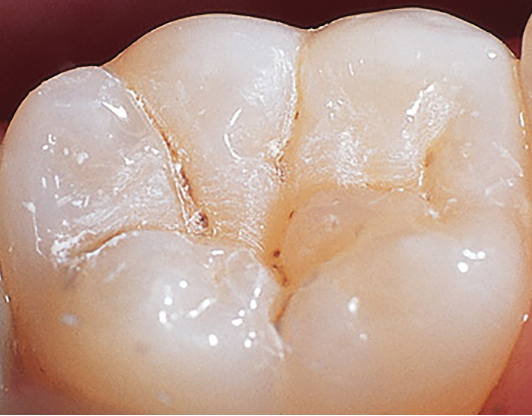Dental sealants are a painless and practical treatment choice to prevent tooth decay.
Back teeth (premolars and molars) have naturally occurring recesses and grooves on their biting surfaces. At times, even anterior teeth have pits behind them in an area known as the cingulum. These crevices make teeth susceptible to sugar and plaque accumulation. The result is cavities that could be prevented.
In this issue, we will discuss how the simple and painless treatment application of dental sealants can make a significant difference in cavity prevention.
Dental sealants are thin, plastic coatings painted on the chewing surfaces of teeth. They prevent dental caries (cavities). The sealant quickly bonds into the pits and grooves of the teeth forming a protective barrier over the enamel of the teeth. Sealants are less expensive than fillings and are a good preventive treatment in oral health care.
Although a good preventative measure, patients are still instructed to thoroughly brush and floss their teeth to remove food particles and plaque from smooth surfaces of teeth and in between their teeth.
Sealants are usually recommended for children and teenagers because of the likelihood of developing decay in the grooves of newly erupted permanent premolars and molars. In this way, the sealants can protect the teeth through the cavity-prone years of ages 6 to 14. Also, adults can benefit from sealants however, the earlier you get them the better.
Your 1st molars appear around age 6 and 2nd molars appear around age 12. Sealing these teeth as soon as they erupt, can keep them cavity-free from the start, which helps save money in the long run.
At times, dental sealants are also applied on primary (baby) teeth especially when a child’s baby teeth have deep fissures and grooves. Although the baby teeth are lost naturally it is important to preserve them during the teeth-changing years because they play an important role in holding the space for permanent teeth. When this does not happen because of early baby-teeth loss, the permanent teeth will likely erupt crooked or they remain trapped below the gum.
Sealants have been shown to reduce the risk of decay by nearly 80% in molars.
This is especially important when it comes to your child’s dental health. The Center for Disease Control found that school-age children without sealants have almost three times more cavities than children with sealants.
Think of sealants as raincoats for your teeth. When the cavity-causing bacteria that live in everyone’s mouth meet residual food particles, they produce acids that create holes in your teeth. These holes are called cavities. When a sealant has been applied, it keeps the food out thereby stopping bacteria and acid from settling on your teeth- just like a raincoat would keep you clean and dry during a rainfall.
Sealants will usually last for several years before they need to be reapplied. During your regular dental visit, the dentist will check the condition of the sealant and can reapply them as needed.
Dental sealants are important considerations in your oral health program. Since they are painless, cost effective and can be easily applied. Consequently, dental sealants are of great value in preventing the most common disease among children- dental cavities.
Dr. Kendal V. O. Major is Founderand CEO of Center for Specialized Dentistry which is a comprehensive family dental practice operating in Nassau and Freeport. He is the first Bahamian Specialist in gum diseases and dental implants since 1989. He also is a certified Fast braces provider. His practice is located at 89 Collins Avenue, Nassau at (242)325-5165 or [email protected]

Molar grooves treated with dental sealant

Deep fissures and groves on biting surfaces of molars





